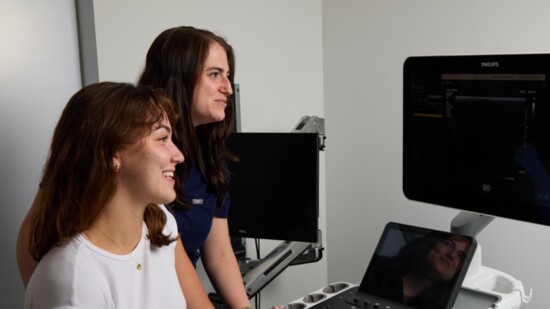October is breast cancer awareness month, and it’s a perfect time to schedule your annual breast imaging if you haven’t already done so. Westport Lifestyle sat down with Gilda Boroumand, M.D., a breast imaging radiologist at Connecticut Breast Imaging, which has five locations in the area for mammography and ultrasound. Dr. Boroumand advised us on the latest recommendations to help folks in Fairfield County get the best preventative breast health care.
Westport Lifestyle: First off, what are the current breast cancer screening guidelines?
Dr. Boroumand: Annual screening mammography, starting when you're 40, saves the most lives, and I would urge all women to make sure they're getting a 3D mammogram. Rather than taking one static picture, a 3D machine takes multiple, very low-dose X-rays and puts together an image where we see many slices through the breast tissue. I compare it to rather than looking at the cover of a book and guessing what's inside, you get to flip through the book and read parts of it. You get a lot more information.
WL: Recently, actress Olivia Munn made headlines when she revealed she had breast cancer, and that her mammogram missed the cancer but it was found on an MRI. Should women be concerned about mammograms missing cancer?
Dr. Boroumand: I'm glad that celebrities are bringing this into the conversation so that we're talking about breast cancer. But people don’t know how great mammograms are— I would say, for all women, mammograms are vital. As cases like Olivia Munn’s show, they’re not perfect— they can have some difficulties on women with dense breast tissue. So what can you do? You can get a breast ultrasound, and we are fortunate that Connecticut is a state with a mandate for private insurance to cover breast ultrasounds. Or, if your cancer risk assessment indicates you are high risk, like Olivia Munn, breast MRI is also an excellent tool.
WL: What is dense breast tissue? How do you know if you have it?
Dr. Boroumand: Dense breast tissue refers to what breast tissue looks like on a mammogram—it looks white, and the problem is that cancers typically also look white. [As to how you’ll know you have dense breasts,] every mammogram report has to have a breast density statement, so the report should state specifically what your breast density is. At our facility, there is specific phrasing that says if you have dense breast tissue, you should speak about it with your physician and consider having a breast ultrasound. With ultrasound, we're able to see things we may not have been able to see on a mammogram.
WL: If you have dense breasts, should you be getting both a mammogram and an ultrasound?
Dr. Boroumand: Yes. There are findings that we see only on a mammogram— things like calcifications, which can be an early sign of breast cancer.
WL: Are there any misconceptions about mammography and breast cancer screening people have?
Dr. Boroumand: There’s one set of guidelines that says to stop getting mammograms at age 74. In this day and age, 74 seems so young! I think the age to stop is a personal decision. But the message I would give patients is that as long as you're healthy and motivated, there's no reason to stop.
To schedule breast imaging at Connecticut Breast Imaging, visit ctbreastimaging.org
"I would say, for all women, mammograms are vital. Annual screening mammography, starting when you're 40, saves the most lives."
